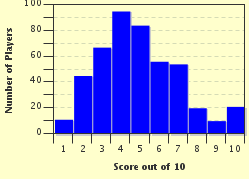Quiz Answer Key and Fun Facts
1. When I was young we still had food rationing in the UK. When did rationing end?
2. When I was young Monday was wash day. No washing machines or tumble driers. Instead everything was put through one of the contraptions shown in the photo. What was it called?
3. Radio was the main form of entertainment and information for many years. There were no transistors, however. What did radios have inside them that made them work?
4. When I was young music came via the radio or the gramophone. These gramophones played records at one speed only. What was that speed?
5. New toys were scarce when I was growing up. One of my favourites was the rocking horse, which had belonged to my mother before me. They evolved from something called a rocking cradle that was used in the Middle Ages. What was it originally used for?
6. When I first went to school we certainly weren't trusted with paper and pen, or even pencil at first. What did we write on instead?
7. Life wasn't all hard austerity in my childhood. There was Saturday morning cinema to look forward to. Of the following which was a club started by a cinema chain?
8. When I was young many houses did not have indoor toilets, let alone a bathroom. Babies and toddlers were bathed in the kitchen sink, but what did adults and older children use?
9. In the early 1950s BBC was the only broadcaster of television programmes. Every day, between 6pm and 7pm they closed down for an hour. What was this hour known as?
10. When I was young I read a lot. One of my favourite series of books was by a lady called Elinor Brent-Dyer. Which school did she write about?
Source: Author
Christinap
This quiz was reviewed by FunTrivia editor
bloomsby before going online.
Any errors found in FunTrivia content are routinely corrected through our feedback system.

